How does banned presentation compare to N.B. sex-ed curriculum?
Last week the province told schools not to allow a presentation from a Quebec-based sex education group, after Premier Blaine Higgs said it went beyond the scope of the curriculum.
But HPV Global Action president Teresa Norris, who recently delivered the presentation to Grade 9-11 students in New Brunswick, is disputing that claim.
Schools have been instructed not to allow the group to present again, according to Education Minister Bill Hogan, who repeated Higgs's assessment that the presentation covered material outside the curriculum.
Higgs told reporters last week that he made the conclusion based on one slide of the presentation, which features questions such as "do girls masturbate" and "is it good or bad to do anal?" The premier said he had not seen the rest of it.
The slide shared by Higgs is the first of about 100, CBC News has confirmed, in a presentation titled Healthy Relationships 101.
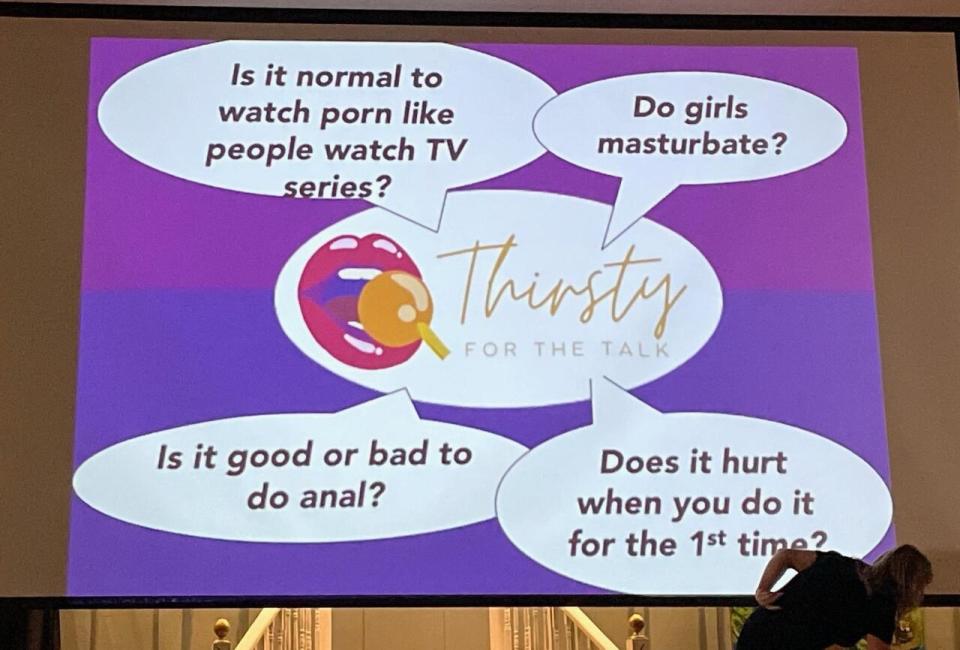
Norris provided a viewing of the full presentation to reporters recently, noting that she hopes to clear up any confusion about the content.
"I came at this career from a very different angle. It stemmed from the loss of a good friend of mine to cervical cancer, and realizing that there's very little information [on HPV]," she said.
"That personal goal that I created over 20 years ago has been the driving force that has led me to being so shocked that an entire narration has been created over a slide that portrayed four questions."
What's in the presentation?
The presentation viewed by CBC News begins with the slide posted by Higgs.
From there, Norris uses her personal story about losing her friend as a launching point to talk about the importance of sexual health awareness.
Next is a disclaimer to acknowledge that students in the room are all coming from different backgrounds and may have varying levels of comfort with conversations about sex.
The presentation is broken down into sections, with the first defining healthy versus unhealthy relationships, and potential resources for students who might struggle with an unhealthy relationship. It also addresses how that applies in an online setting, such as social media.
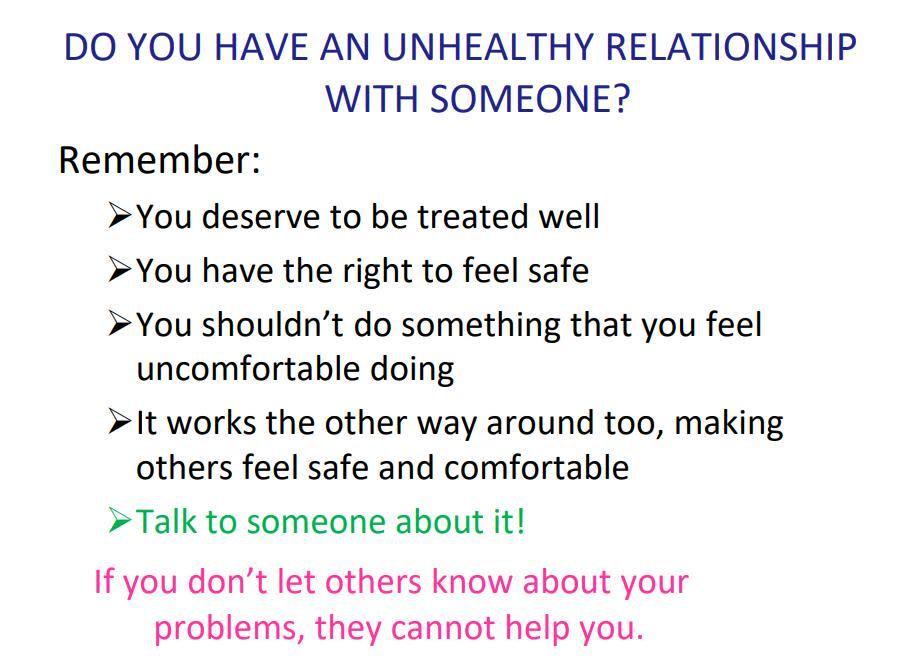
Another section defines sexuality as how individual people feel about themselves and how they navigate romance or affection, with examples of different heterosexual and 2SLGBTQ+ couples shown.
It adds that however the student feels about romance or affection is normal and worthy of respect.
The presentation then defines what it means to be sexually active versus abstinent, and why some might choose abstinence. A statistic says the number of sexually active 15- to 19-year-olds in Canada is on the decline.
Consent is defined in the next slide, with a focus on encouraging students to notice if they are feeling pressured into a certain activity.
Norris then circles back to HPV, noting that it is spread through sexual activity and often has no symptoms.
She gives statistics about the virus, potential outcomes like cancer, and promotes the New Brunswick Cervical Cancer Prevention and Screening program. She also lists information about the province's HPV vaccination program.
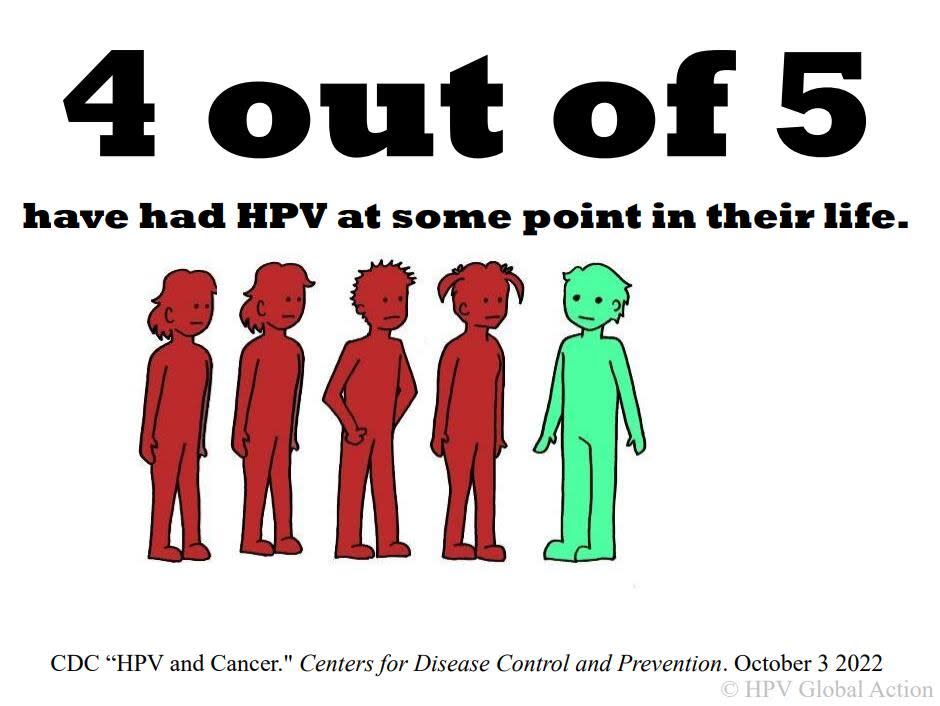
The presentation continues with information about sexually transmitted infections, the different types of sexual contact where STIs can be spread, and a list of potential warning signs that a person could have an STI.
Another slide urges students to get tested for STIs and lists the different types of testing. That's followed by information about how to use and store condoms properly.
Pregnancy is the next topic, with a slide about how one can avoid getting pregnant. Information is given about the proper uses of birth control and the morning after pill.
What's in N.B.'s sex-ed curriculum?
The province's sex education curriculum for high school students includes decision-making around sexual activity, healthy interpersonal and sexual relationships, consent, boundaries, and identities and relationships, among a list of "core concepts."
In an educator's companion document for the Personal Wellness 9 course, designed for high school students, a "developmentally appropriate guide" says teachers should cover "sexual consent and safety-focused safer sex practices."
The document also says educators should share information about decision-making and sexually transmitted infections, including prevention and treatment.
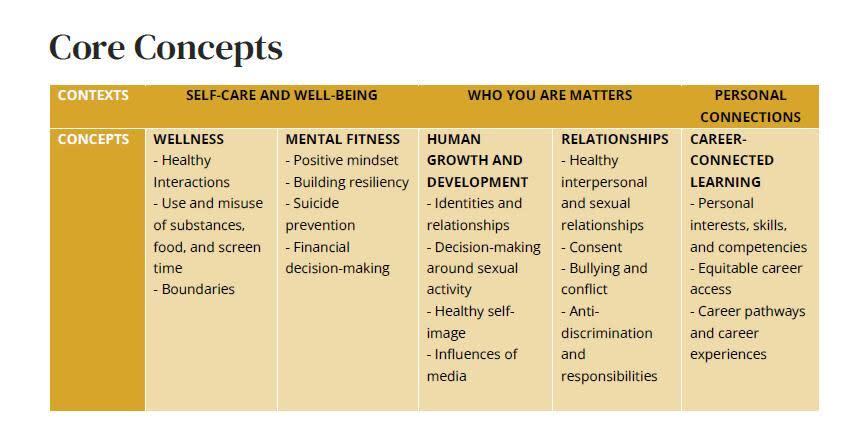
Personal Wellness 9 students, according to the curriculum, should be able to "demonstrate the knowledge, responsibilities, and skills necessary to make informed decisions about becoming sexually active."
It lists the following "achievement indicators" for students:
Reflect on and share personal values, attitudes, and beliefs about becoming sexually active.
Assess factors that influence consent to and during sexual activity.
Explain laws that govern consent.
Describe factors that contribute to the development of healthy sexuality (e.g., self-pleasure).
Affirm the diversity of relationships across sexual orientation and gender identity, including sexual relationships.
Explain risk factors for sexual harm, including substance use.
List resources and supports associated with promoting and maintaining sexual health.
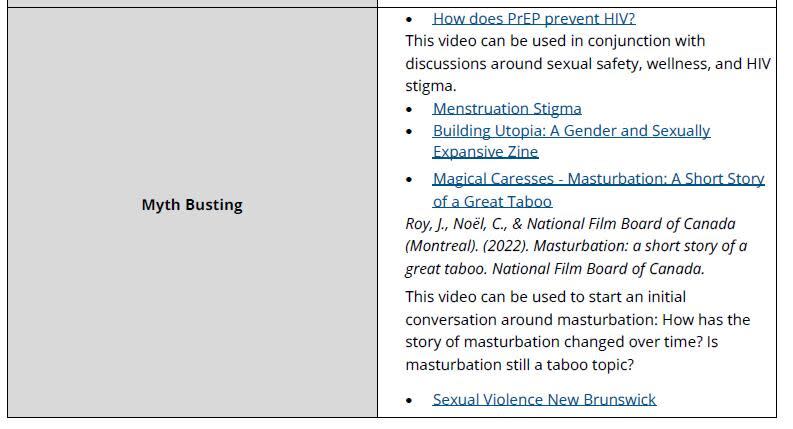
The curriculum also asks students to evaluate how media can affect healthy relationships, sexuality and gender, and to "analyze the influence of media, including pornography, on own and societal ideas about relationships and sexuality."
Students are also taught to "evaluate the influence of respect, empathy, power, and coercion on establishing and maintaining respectful relationships, including sexual relationships."
That includes learning how to seek, give, withdraw or deny consent, and to identify whether a relationship is healthy.
Where does the issue stand?
Last week Hogan said that he had instructed school districts not to book any presentations from the group and to cancel any existing bookings. He said the Department of Education is investigating how the presentation was vetted, and who completed the vetting. He said the presentation "was recommended by another party" but would not give further detail.

On Wednesday, Hogan said the department had previously received an "overview" of what is in the presentation. He told reporters he's sought a full copy of the presentation but has yet to receive one.
However, Norris says she has a meeting scheduled Thursday with the premier's office to share the content.
"We've always agreed to share our presentation and have scheduled a meeting with the Premier's team tomorrow to run through it in person to ensure all aspects are fully understood," she said in an email Wednesday.
"We share their eagerness to resolve the matter swiftly and feel this represents a valuable opportunity to address the situation comprehensively. Given the considerable confusion ... we feel this conversation is both timely and essential."
CBC News contacted the premier's office on Wednesday to confirm that meeting but has not received a response yet.


